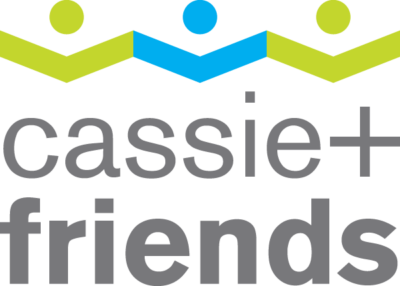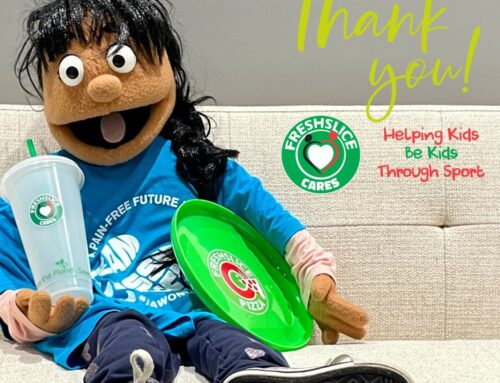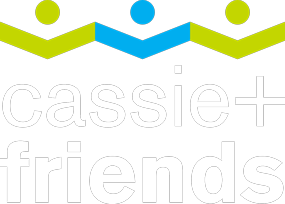David Porte knew something was wrong with his infant daughter when he took her out of her crib one morning and she couldn’t walk. Little Cassie had been active and healthy up to that point, so this development left her parents puzzled and worried. Neither Porte nor his wife, a doctor, was prepared when they learned what was causing her immobility.
“We took her in for tests to rule out anything it could be,” Porte says in a telephone interview with the Georgia Straight. “She didn’t have a virus, she hadn’t hurt her knee, and she didn’t have an infection. Then we heard she had juvenile arthritis. I had never even heard of it.
“What made it especially hard was that it isn’t something that’s going to go away tomorrow; it’s something you deal with for a lifetime,” adds Porte, who has an older son who doesn’t have the often debilitating condition, which is characterized by inflammation of a joint with swelling, pain, and stiffness. “I didn’t know anybody who’d had this and my wife didn’t know anybody who’d had this. It’s very isolating.”
As was Porte, many people are unaware that arthritis can strike kids as young as one year. Vancouver pediatric rheumatologist Lori Tucker points to a recent poll by the Arthritis Society that found that only 17 percent of Canadians know that children can get the disease.
“What I hear time and time again is, ‘How could it be that my child has juvenile arthritis? I didn’t even know kids get arthritis,’ ” Tucker says on the line from her office at the pediatric rheumatology clinic at B.C. Children’s Hospital. “We see quite a few toddlers and quite a few teenagers. Part of the problem with recognizing it is that symptoms can be subtle, and kids are really good at figuring out different ways of doing things if they can’t do something properly. Parents might put off pain or stiffness as being the result of a sports injury or from falling.
“It’s compounded by fact that it’s not just the public who don’t know that kids get arthritis but even general practitioners,” Tucker adds. “They don’t get a lot of training in examining the musculoskeletal system in children.”
It takes an average of one year and visits to three separate doctors for kids to be diagnosed, she says.
There are seven subtypes of what’s clinically known as juvenile idiopathic arthritis, which is not the same as rheumatoid arthritis. Idiopathic means of “unknown cause” or “spontaneous origin”.
“They all look quite different,” Tucker says. “Some children have fevers and rashes and inflammation around organs, which can be life-threatening. There are some children who have just one swollen knee.
“The kind of symptoms that parents can watch for includes pain in joints that lasts for long periods; joint swelling or joints that don’t stretch normally; stiffness, or stiffness in the morning that might get better during the day; and trouble doing normal daily activities.
“We see kids who don’t want to walk anymore,” she adds. “Sometimes kids are irritable because they’re in pain.”
The disease affects people differently and progresses differently as well. In some kids, the disease may last only a few months, then disappear forever. For most, though, the disease comes with flare-ups and remissions.
Children with arthritis are not just kids with an adult disease, Tucker notes. Their growth may be stunted or one leg may grow longer than the other. Then there’s the potential emotional impact of having a chronic illness during developmental years and adolescence.
After she was diagnosed, Porte’s daughter went from having one joint affected to 16.
“It was in her ankles, knees, wrists, fingers…” Porte says, noting that medication has largely brought her condition under control. Now seven, she’s able to dance, ski, play baseball, and run around with her friends. But she’s currently dealing with uveitis, inflammation of the uvea, the middle layer of the eye. For that, she needs several injections of medicine a week.
“She’s just a little kid,” Porte says. “But the kids and teenagers we’ve met who’ve gone through this are amazingly strong. They’ve gone through stuff that most of us can’t even imagine.”
To help others struggling with the often shocking diagnosis of juvenile idiopathic arthritis, Porte and some other families started Cassie and Friends Society for Children With Juvenile Arthritis and Other Rheumatic Diseases, a nonprofit organization dedicated to supporting those affected and raising funds for research.
The group has its big annual fundraiser coming up, when Porte and many others will be participating in the Scotiabank Vancouver Half Marathon on Sunday (June 24).
B.C. Children’s Hospital’s pediatric rheumatology clinic is actively involved in research nationwide and is collaborating with other centres across Canada in a study that’s looking at 1,500 kids with juvenile idiopathic arthritis.
“Our team consists of doctors, nurses, a physical therapist, an occupational therapist, and a social worker,” says Tucker, a clinical associate professor of pediatrics at UBC’s school of medicine. “All of us see patients and parents all together at one time, so it’s one-stop shopping. We have many families who come from all over the province, and they might see any or all of those care providers, depending on what their situation is.
“With treatment, most kids do improve quite rapidly, within six to 12 months, but they need to be taking medication,” Tucker adds. “Early treatment, we feel, gives the best outcome.”
The Vancouver clinic is also researching the effect of physical activity on juvenile idiopathic arthritis.
“We do recommend keeping active and participating in physical activity. That’s another myth: we commonly see kids who’ve been seen by another physician who told them to stop PE and not do any activity.
“There are lots of kids who play soccer, who play volleyball…” Tucker says. “One of our big research projects is looking at physical activity in kids with arthritis, to look at safe recommendations for exercise and to understand how it may improve inflammation.”
It’s believed that one in 1,000 kids has juvenile idiopathic arthritis, though Tucker says the number may be higher. Still, it’s far more prevalent than people realize. “In a big school, there’s probably one or two kids who have arthritis,” she notes. “It’s far more common than some diseases that people are well aware of, like cystic fibrosis and even some new diagnoses of cancer. Because of that low profile, there’s far less research funding.
“But early diagnosis is so important, and early treatment leads to good outcomes.”





